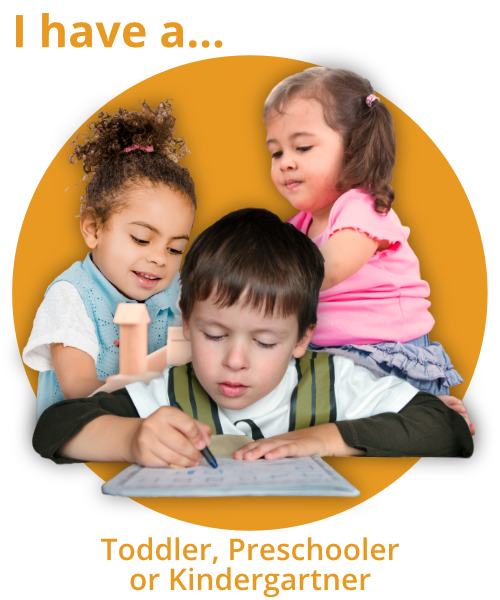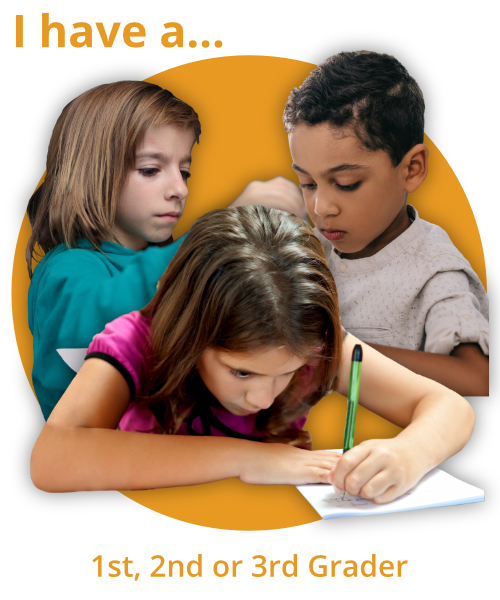Poetry Teatime Isn't Just a Charlotte Mason Thing
Tea parties + literature have always been a staple in our homeschool, but it wasn't until years later that I learned it was popular in the Charlotte Mason community of homeschoolers. As a Montessorian, I can tell you: this is a good ritual to add to your rhythm and routine no matter what core philosophy you follow!
I'm Aubrey Hargis, Montessorian and mom of two. I also have an inner poet that comes out to play whenever my children and I are exploring the world and using language to express our feelings. Poetry can be a powerful tool for you as a homeschooler! This is the perfect time for you to read new things and make new family traditions…
because education is a journey we take with our children, and the opportunities for learning start over every day.
Hey Sweet Friend
Tea time was an important part of my own childhood; All dressed up and fancy, shared with my grandmother while she recited poems she wrote herself. I knew it would be important for my own family, too--our tradition started when my Mother bought us a sweet little tea set from Montessori services. This tradition, across generations, was super important to our Montessori homeschool!
I realized later that the Charlotte Mason homeschooling community was all about the poetry and the tea...but this is something that I wish more Montessori homeschoolers knew about! It can be a really sweet anchoring event for your family; something to incorporate into your normal homeschooling day, whenever you need a break. It's also a great time to read your child things you might not normally read, like poetry! So we're going to go more in detail about how I have done this throughout my own homeschool, why tea and poetry seem to go together so well, and some tips for how you can actually incorporate that into your home life.
But first, if you're new here, welcome! If you're interested in going deeper into some of what I do, I would recommend that you take a look at my FREE Find the Calm mini course.
Meet Amber
Each week, I like to feature someone who is a part of our Child of the Redwoods community! The participants in this community are such a huge part of what makes it special. This week, we’re sharing advice and inspiration from Homeschool of the Redwoods Alumna and Constellation member Amber, Montessori Mom of 1! You can learn more about Amber here.
Some Benefits of Reading Poetry with Children
Introducing rhythm
Sharing new vocabulary
Playing with inflection and expressing emotion
Experiencing a variety of pitches, vocal sounds, volumes
Linking creativity and playing with words
Hearing and eventually identifying patterns
Exposure to and eventually analysis of sentence structure
Using deep abdominal breathing to deliver the poem
Developing emotional resilience
Where We Started
When my children were fairly young, I introduced them to the original A.A. Milne Winnie the Pooh...fantastical talking animals and all! While some of the actual stories are geared more towards children of 6 or 7, Milne’s poetry (often based upon Pooh bear) is lovely for sharing with younger children.
An Excerpt from “Us Two” by A.A. Milne
"Let's look for dragons," I said to Pooh.
"Yes, let's," said Pooh to Me.
We crossed the river and found a few-
"Yes, those are dragons all right," said Pooh.
"As soon as I saw their beaks I knew.
That's what they are," said Pooh, said he.
"That's what they are," said Pooh.
"Let's frighten the dragons," I said to Pooh.
"That's right," said Pooh to Me.
"I'm not afraid," I said to Pooh,
And I held his paw and I shouted "Shoo!
Silly old dragons!"- and off they flew.
"I wasn't afraid," said Pooh, said he,
"I'm never afraid with you."
Poetry In Action
Sometime after we had moved to Alexandria, Virginia, we decided to go and visit Mount Vernon, which is the grounds and home of George Washington. There is a lot of history to explore in that place: not the pancakes which they seem to memorialize in the tour, but also the enslaved people who worked and gave their life to develop the property into what it is today. We went with family and my children--one needing to nurse, and the other desperate to run, were simply not going to make it through a museum-style tour. So we went to wander the grounds together!
We walk into the middle of this big grassy field, where we see 100 or more of these beautiful Canadian geese, all just sitting on the lawn happily. My oldest son looks at me, and then he looks at the geese, and he gets this shy, scared, but also kind of sneaky smile on his face.
He looked into my eyes and said “Let’s slay the dragons!”
And I said, “Here? I don't know that people would like us to do that here…”
He looked back at me and said “I'm not afraid.”
He races towards the fencing and waves his arms... and nothing really happens because the geese aren’t really afraid of this little three year old boy. My son just laughed and laughed and said silly old dragons, silly old dragons. I think it was at that point that I realized the power of reading these poems over and over and over. It's not just that we were able to re-enact the poem in real life. It was that he had internalized the message of the poem: to be brave. A life doesn't have to be so serious. Something scary doesn't have to scare you...you can choose to hold someone's hand and confront it.
Hurt No Living Thing by Christina Rossetti
Hurt no living thing:
Ladybird, nor butterfly,
Nor moth with dusty wing,
Nor cricket chirping cheerily,
Nor grasshopper so light of leap,
Nor dancing gnat, nor beetle fat,
Nor harmless worms that creep.
Poetry in Action
If you were to say this poem to a young child over and over and over, say daily, what do you think might happen? I expect they would start to repeat it back to you; and as they do, begin to internalize it. Looking at the worms or the crickets chirping cheerily, all of the sudden, they have a reminder: we must hurt no living thing! In this way, poetry can help children internalize the values you share as a family.
Teatime: A Cross-Cultural Tradition
Tea Time is often thought of as a remnant of the Victorian era. It might call to mind Downton Abbey, or maybe even your own grandma's China set…
But people drink tea all over the world and have for many thousands of years. It's usually a social event, a gathering or a lively discussion, without technology or interruptions. It's a time of respite and calmness. In many places, it holds a special place in ceremonies. People serve it as a sign of respect for their elders, or for other traditional or nutritional reasons. You might enjoy doing some research with your child on the green tea of China, the butter tea of Tibet, the iced tea of Thailand, matcha from Japan, the bubble tea of Taiwan.
Herbal tea is ancient. A quick google search tells me that the earliest verbal record of herbal teas dates back to 2737 BC in China. We know it’s probably older than that, even, because humans have been eating plants--as nutrition and as medicine--as long as they have been on earth
We have lost some of our connection with plants and some of the understanding of the effects they can have, at least here in American society. We know about caffeine but may not explore past that. Herbs like lavender, chamomile, and holy basil can help us calm down. My children prefer licorice, although I try not to let them drink too much of the licorice because it can also have other side effects.
Most herbs used in tea can have medicinal effects. So whatever herbs you're using, make sure that you look them up first! Don't just say Aubrey told me to go and drink herbal tea, and then go just grab some and drink it. They can be very powerful on your system and they can be contraindicated with some other forms of medicine. If you decide to use herbal tea medicinally, know it needs a looooong steeping time, and be sure to know and understand what it can do, first.
What Makes Poetry Tea Time Montessori?
I don't really know if Maria Montessori drank tea a lot -- I can guess, based on the era she lived in, but I do not know the specific traditions of Rome, Italy where she lived. I do know that she made a great emphasis on helping to teach children grace and courtesy. One way she did this was by setting up elaborate and formal mealtimes. She wanted children to feel confident and comfortable in formal settings,and use it as a gateway to teach them certain practical life skills.
Children in the Casa dei Bambini would go and set the table with all of the fancy dishware, tablecloths, cloth napkins, candles and just all the loveliness. Tea time is a way you could make this happen at home! We did have fancy dinners from time to time, but we also did fancy tea times. We would get a little tray, set with a teapot of tea and teacups. We would take it to the table, maybe with a small snack, and drink our tea together! I would read poetry, or a story -- it didn’t always HAVE to be poetry, but they were a nice length for a brief meeting together. It can be a nice pause in the middle of either your morning or your afternoon time.
Some families do it at bedtime--a lovely tray laid out on the parent’s bed, and tea all snuggled up together there. It doesn’t need to be at a specific time of day; it is just a great way to establish a ritual that calms everybody down, that brings everybody together, that draws everyone into conversation or language learning. So I encourage you to give it a try! Whether you are more aligned with Montessori or whether you're more aligned with Charlotte Mason, I think it's something everybody can do.
Gratitude
Today, I am so grateful for all of the tea that spilled on my bed the day that I decided to implement the bedtime tea ritual one of my homeschool friends recommended. At the time, I was confused because it wasn't going the way I had expected it to go. But it was fun to try. And my children enjoyed it.
I'm just so grateful for trying out new things! It turned out the bedtime tea wasn't the right ritual for usl at the time -- but now that our children are older, we do enjoy a nice bedtime cup of tea... in the living room, before we retire.


